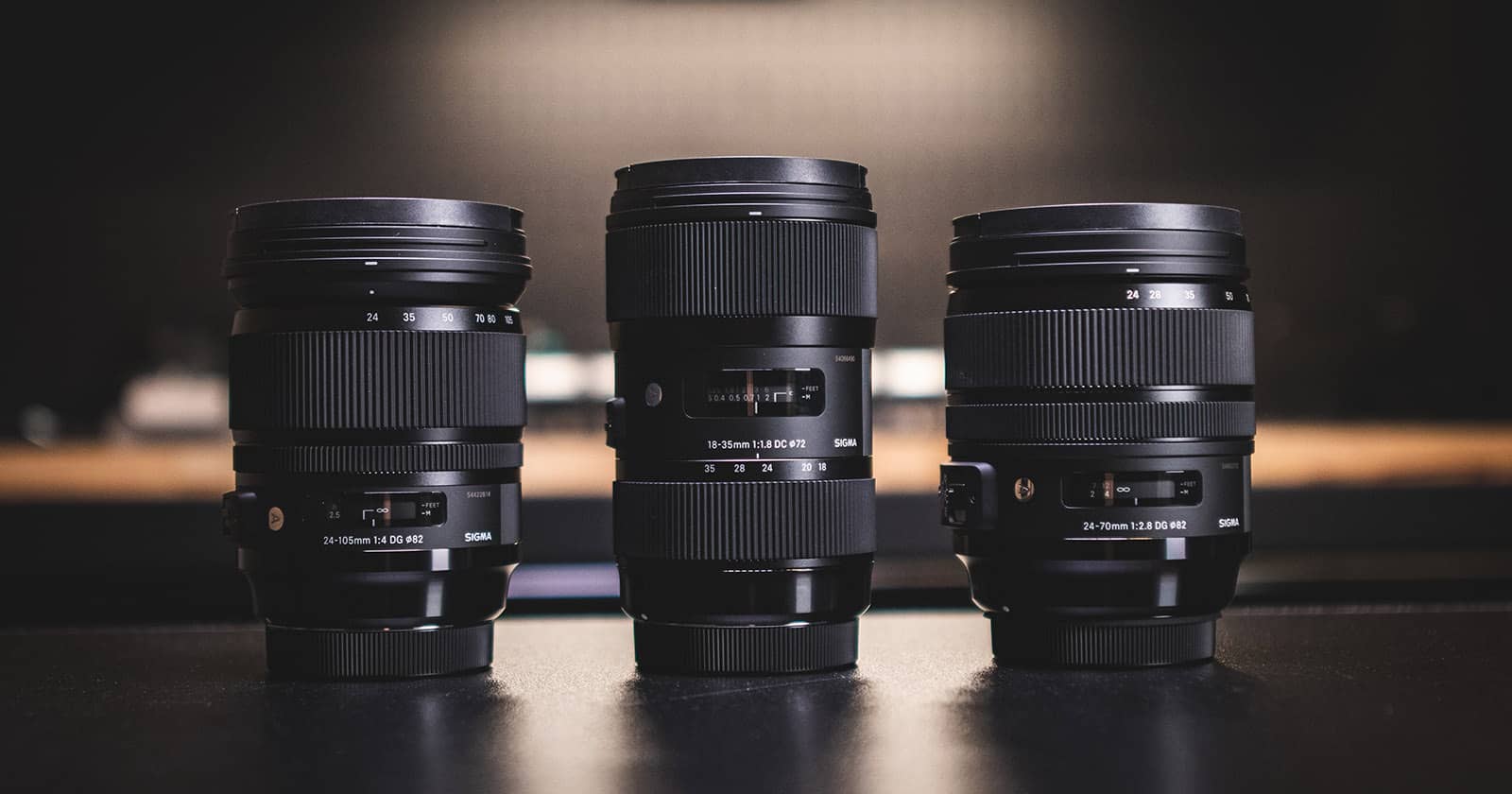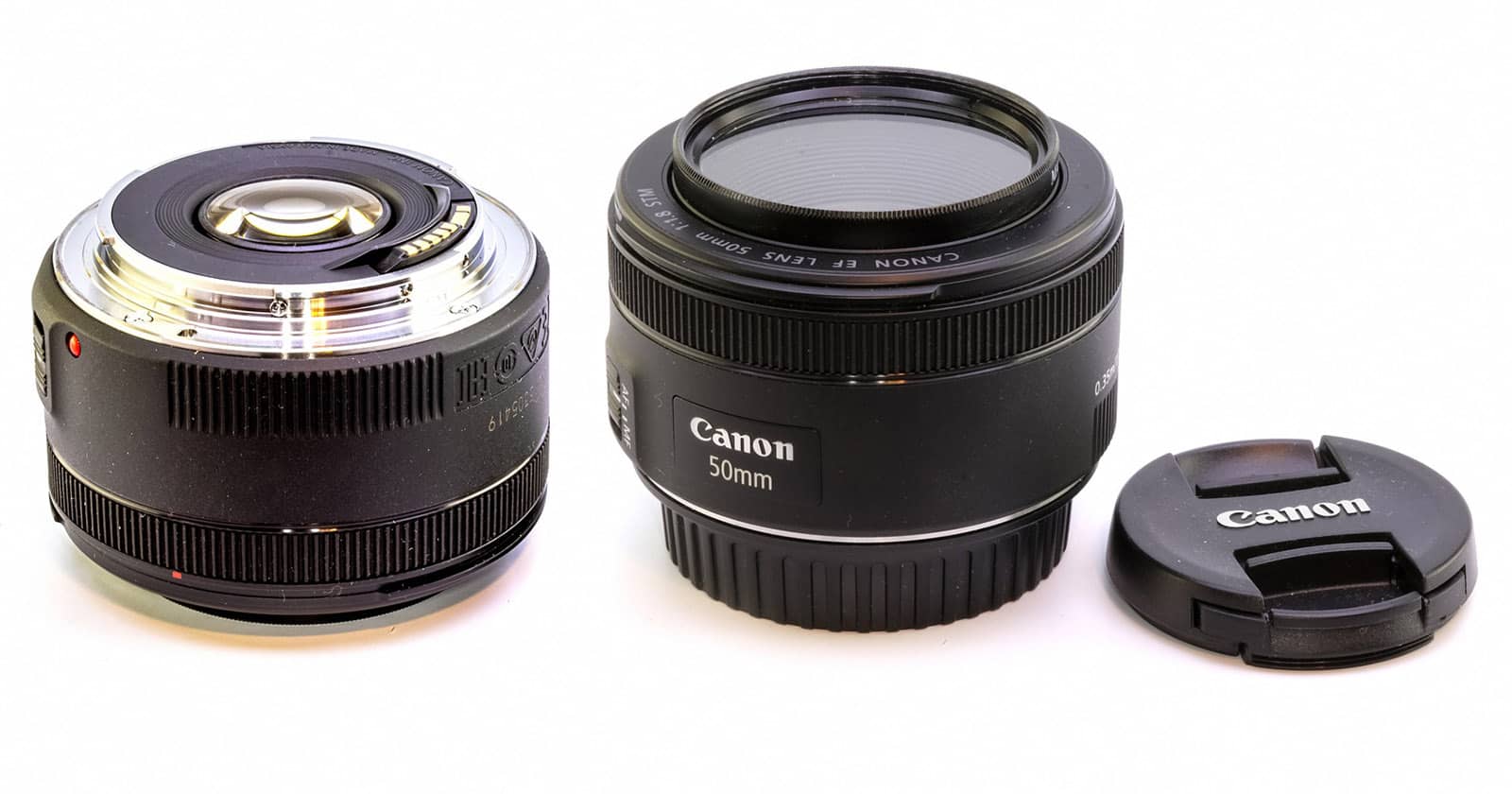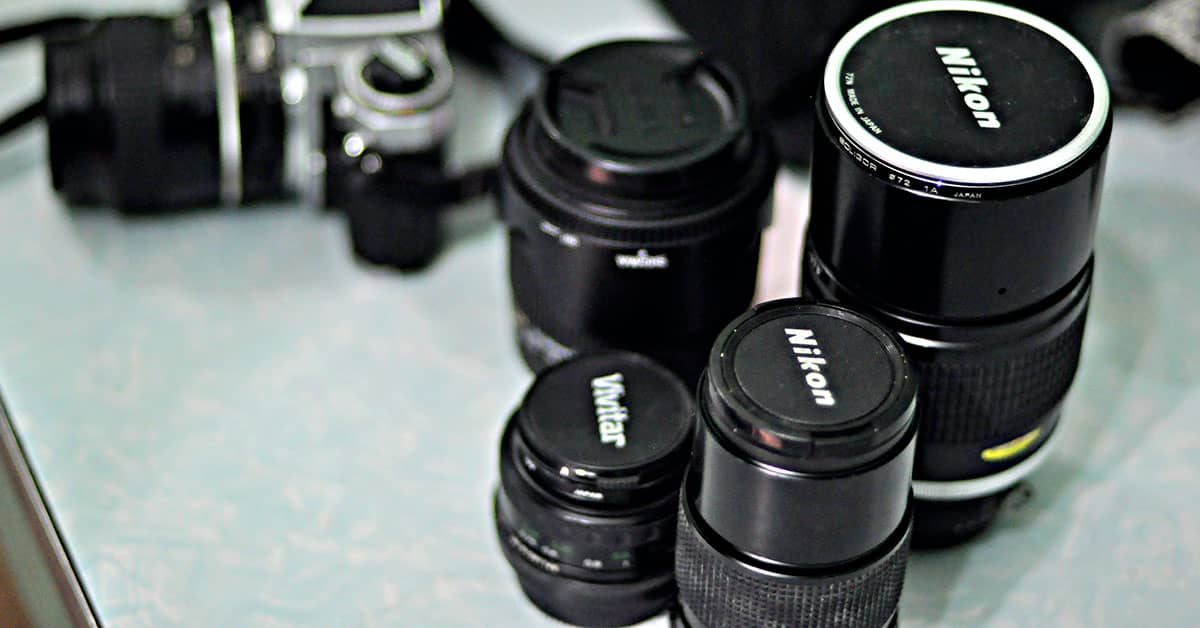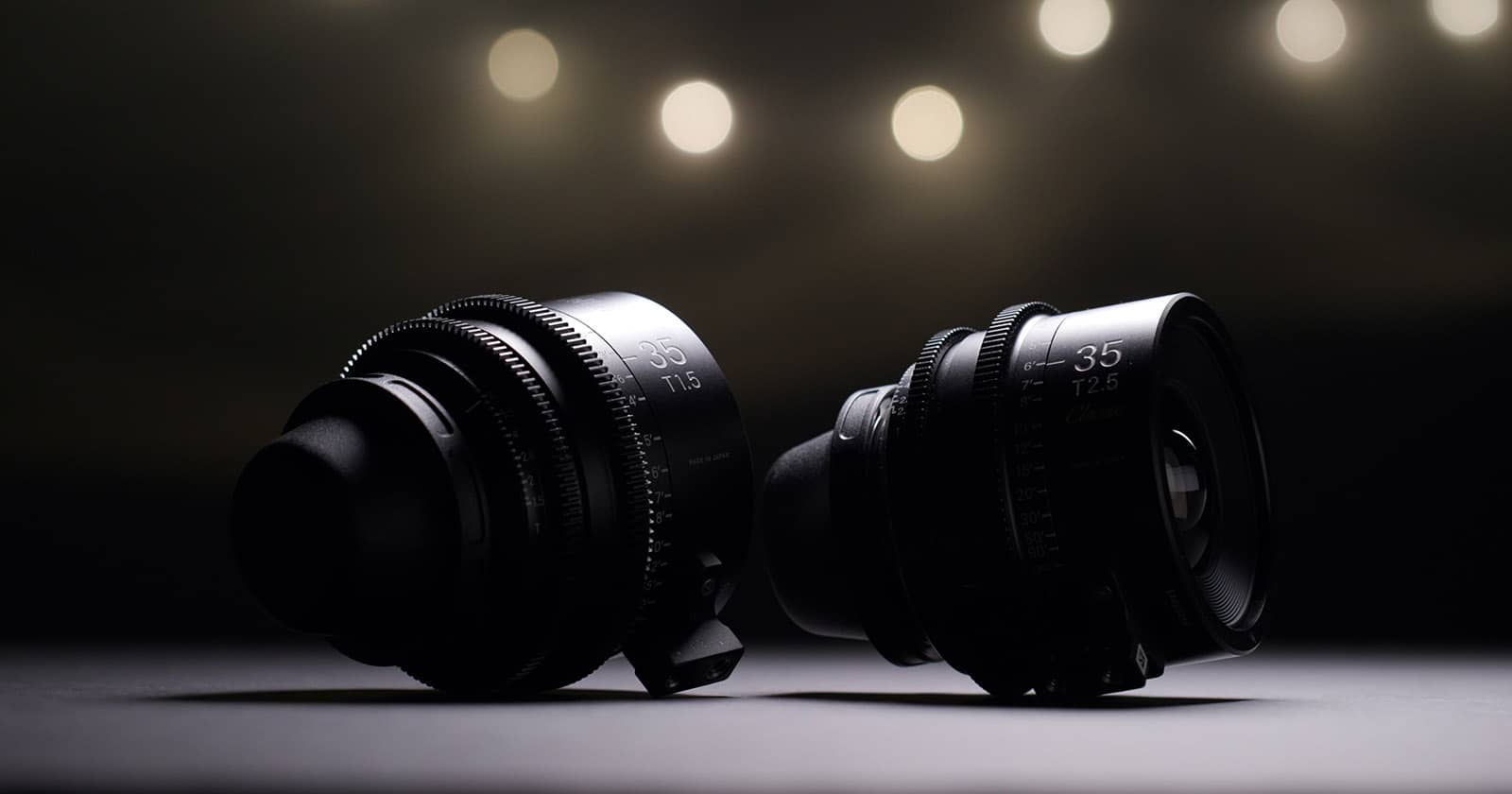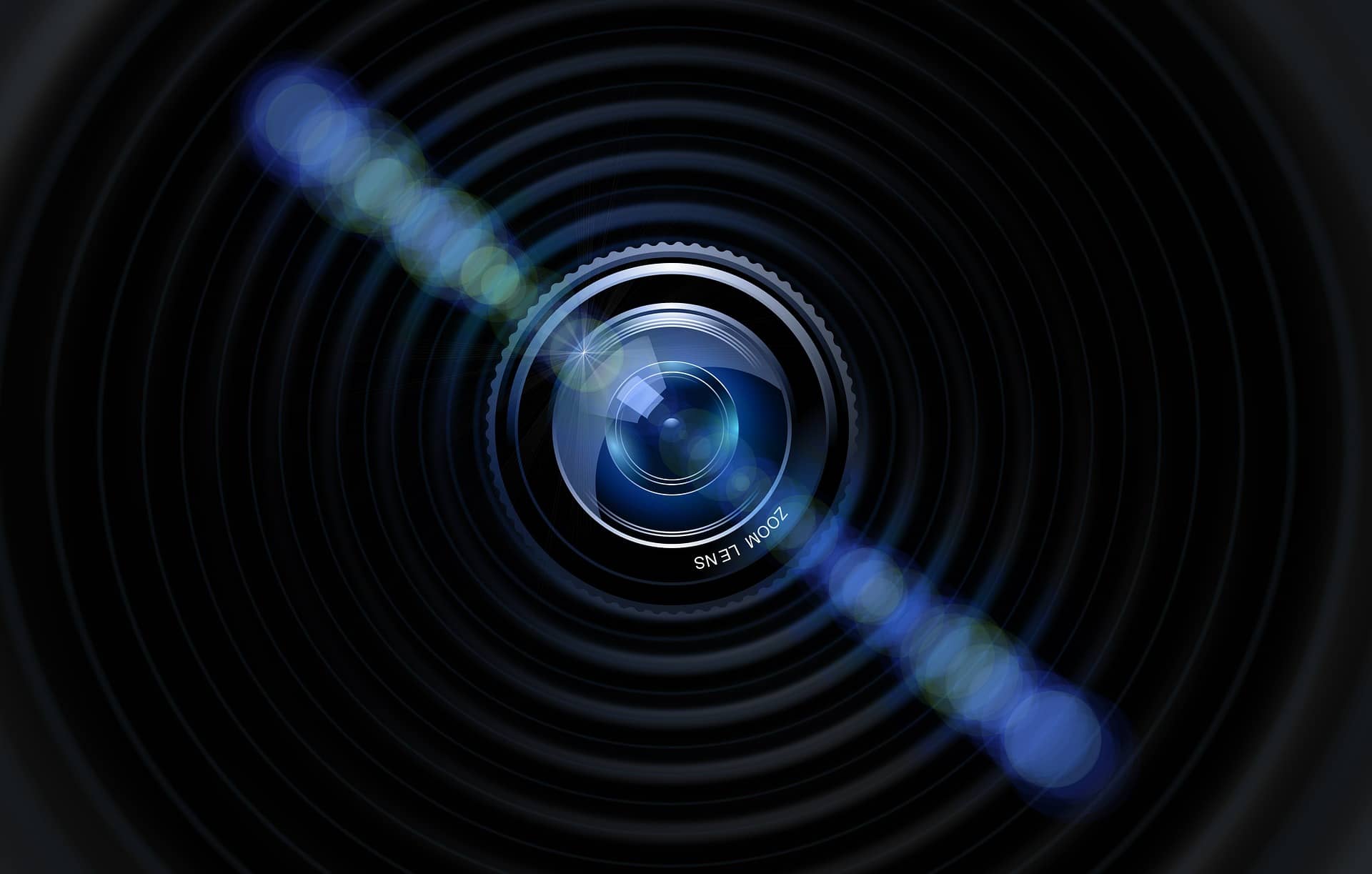Taking pictures for someone is a meaningful experience. The results depend not only on your photography skills but also on the gear you choose. Some amprimeazing effects like bokeh can only be achieved by using lenses dedicated to a full-frame body, and this makes things a bit tricky due to the concept of the “crop factor” involved.
But no worries, I will give you a clear picture of how these terms relate to different lenses. So, in the end, you will know which lens you should choose.
Let’s get started!
Why Did I Pick These Five
Before we get into the nitty-gritty of how these five lenses perform, let me first explain why I chose them so that you have the big picture.
Maximum Aperture (f/1.4, f/1.8)
The main focus of a portrait is the subject. The lens with a wider maximum aperture has huge advantages for creating images with shallow depth-of-field. It blurs out the distracting background and makes the subject stand out.
Even for studios that use solid color backgrounds, the wide aperture is also important.
In most cases, the ambient light—any light a photographer did not bring to the shoot—can ruin a portrait because its unstable color temperature can unfavorably affect the color and tone of the skin.
For this reason, the window should be closed or covered, and the overhead lights should be turned off when possible. This creates a low-light condition where autofocus speed and accuracy can be weakened.
As the aperture of the lens is always wide open until the shutter clicks, the wider the aperture, the better the lens focus.
Bearing all this in mind, the maximum apertures of the five lenses I chose are either f/1.4 or f/1.8. Many photographers haven’t realized that the equivalent aperture is on a par with the equivalent focal length for portrait photography.
Therefore, the background blurring of an f/1.4 or f/1.8 FX lens on an APS-C sensor is equivalent to that of an f/2.1 or f/2.7 FX lens on a full-frame sensor. So, if you are a sucker for dreamy bokeh like me, f/1.4 is the better option.
Focal Length (35mm, 50mm, 85mm)
Focal length is the distance between the camera sensor and the lens’s optical center. It defines how much of the scene will be captured and how far you are from the subject.
50mm and 85mm are the two most common focal lengths for portrait photography. Unfortunately, large-aperture lenses with these two focal lengths are unavailable for a crop-sensor camera. Zoom lenses with these focal lengths are either bulky or expensive.
All things considered, 35mm, 50mm, and 85mm primes are the best options. The equivalent focal lengths for an APS-C camera are 53mm, 75mm, and 128mm, which are ideal for portrait photography.
Budget ($200~$500)
Prime lenses are simple to design. Because no adjustment is required, they have fewer lens elements and groups than zoom lenses. This brings three key benefits.
First, the image quality is better because of the less diffraction bouncing between the lens elements.
Second, they are significantly cheaper than their zoom counterparts.
Third, they are light and compact.
Having that said, I won’t introduce some higher-end lenses, such as ZEISS 55mm F1.4 and Sigma 50mm F1.4. Admittedly, these lenses are among the sharpest on the planet. But most APS-C cameras can’t realize their full potential.
What Are the Best Portrait Lenses for Nikon D7500?
Nikon AF-S NIKKOR 85mm f/1.8G
Best 85mm Lens for Nikon D7500
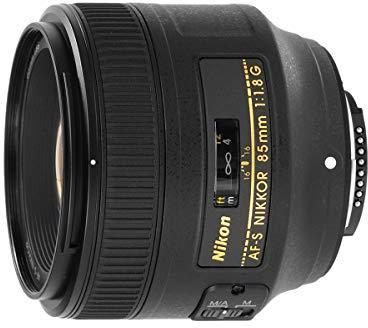
Nikon AF-S NIKKOR 85mm F1.8G
This D7500 lens is very sharp with minimum distortion and provides good-looking bokeh with a shallow depth of field.
Pros
Cons
85mm is the go-to focal length on a full-frame camera for portrait photography. It allows a photographer to stay further away from his/her model compared with 50mm or other shorter focal lengths. This shooting distance makes your subject feel less stressed and behave more naturally. And it creates a subtle pincushion distortion that can be flattering for portraits.
When used on D7500, it gives a field of view similar to what a 128mm lens provides when used on an FX camera like the Nikon D750. This gives you an even further shooting distance, which is great for outdoor portrait photography. But this shooting distance can be a problem in a small interior space. A 35mm or 50mm lens will be more suitable in this case, which I will introduce later in the article.
Let’s go back to the topic of this 85mm lens itself. The lens has 9 elements in 9 groups. Because of the complexity of its design and the more material it uses, it has the highest price among the 5 listed lenses. But it’s worth the price.
It has the most extraordinary sharpness compared with other lenses I list. And what’s more, it is even deadly sharp in the corners with the widest aperture on full-frame, not to mention on D7500.
Another advantage that is definitely worth mentioning is its fantastic distortion control. It has only a tiny bit of barrel distortion on a full-frame body. But when putting on D7500, the distortion is nil, making it also a good option for architectural photography.
It also has the lowest vignetting compared to the other four. And vignetting is not a problem even with a thick filter installed when shooting landscapes.
The bokeh, the character of out-of-focus backgrounds, which means a lot to portrait photography, is pretty good because of the longer focal length and its widest f/1.8 aperture. Although not quite as good as its advanced version, the 85mm f/1.4, it is better than the 50mm f/1.8 G. The shape of the bokeh is a lovely circle formed by the 7-rounded aperture blades. Noted that there’re no ghosts or flares.
Speaking of autofocus, it uses Nikon’s Silent Wave Autofocus Motor (SWM), which helps focus faster without making appreciable noise. The speed and accuracy are the same as its bigger brother, the 85mm f/1.4G.
Because of the more material it uses to make the focal length longer, it is a little bulkier and heavier than the other lenses. But it is still rather small (73mm) and light (350g), making it great for travel photography.
To conclude, it is best for those who will switch to a full-frame camera in the future and who have a particular fondness for dreamy bokeh.
Nikon AF-S DX NIKKOR 35mm f/1.8G
Best 35mm Lens for Nikon D7500
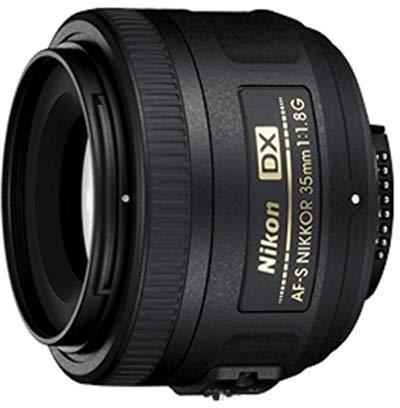
Nikon AF-S DX NIKKOR 35mm F1.8G
This D7500 lens is an affordable lens providing a standard view that is perfect for indoor portrait photography.
Pros
Cons
Contrary to the 85mm f/1.8 G, which is excellent for outdoor portrait shooting, the 35mm f/1.8 G is the best fit for indoor portrait photography. It’s because it has a field of view equivalent to a focal length of 53mm in 35mm format.
This focal length is equivalent to “what our eyes see” and gives you more flexibility in small spaces. It allows you to establish a closer connection with your subject, therefore providing a “mood” to the photo. But be wary of getting too close to the subject—it will distort a model’s features.
The bokeh is less creamy than it is on 85mm. But you get a bit more texture in the background which is useful when the background is not too distractive and nicely shaped.
The price is considerably lower than its big brother, 35mm f/1.4 G, while it is also twice lighter and more compact. Since there is an extra lens element than 50mm f/1.8G, it is a little bit heavier (200g). Needless to mention, it is lighter than 85mm f/1.8G.
The performance of its widest aperture, f/1.8, is crucial for portrait photography because the subject is in focus but the background is blurry in most great portraits. F1.8 is enough to get a blurry background, even for a DX camera like D7500.
Luckily, the lens is super sharp at f/1.8, even in the corners. It includes an “Extra Dispersion” (ED) lens element that is typically used on premium lenses to increase sharpness and contrast, along with a single aspherical lens element to correct spherical aberration.
And due to Nikon’s Integrated Coating, there are no ghosts or flare. But it has more barrel (bulging) distortion in comparison to the other four lenses. The distortion is slightly visible and can be easily fixed in post-production.
Regarding the build quality, it is built with a hard and textured plastic surface. The mount is metal, as usual, but a rubber gasket is added to keep moisture and dust out of the interior of the lens.
From a design perspective, it has an excellent rating for its ease of use. Manual focusing with a thumb and index fingers is a breeze, thanks to its thick focus ring. This is handy when shooting videos as well as portraits.
Another great thing about this lens is its outstanding autofocus performance. In my opinion, autofocus is more helpful than manual focus when it comes to portrait photography. I always use single-point autofocus to focus on the eyes of my models since the image will be out of focus unless the eyes are in focus.
Because of the rear focus and SWM (Silent Wave Motor) it uses, the autofocus is super fast and quiet. For your information, rear focus lenses focus by moving a lens element group behind the diaphragm to focus, which is smaller than the front element group. Autofocus accuracy is also sufficiently satisfactory, even in low light conditions.
Overall, 35mm f/1.8G is more versatile when shooting indoors than the other lenses for its wider field of view. It is entitled to be part of your shooting arsenal.
Nikon AF-S Nikkor 50mm f/1.8G
Best Budget Prime Lens for Nikon D7500
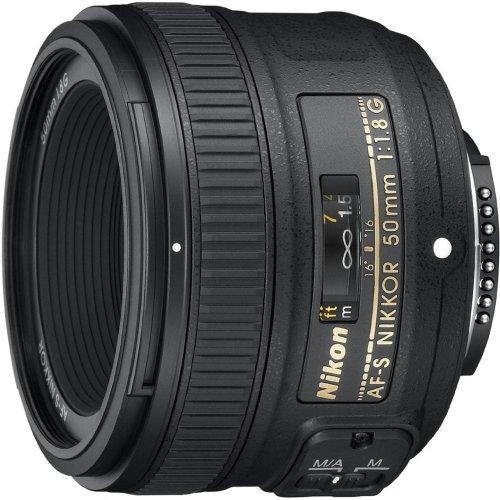
Nikon AF-S NIKKOR 50mm F1.8G
This D7500 lens is also well-known as the nifty fifty. It is the first choice of most photography due to its great versatility and amazing features.
Pros
Cons
My next recommendation is one of the well-known “nitty fifty” lenses. Many photographers choose it as their first prime lens for full-frame cameras because of its exceptional versatility, superior performance, and affordable price.
Mounted on a crop-sensor camera like D7500, it is transformed into a great portrait lens. The focal length is equivalent to 75mm on a DX camera, which is almost close to the aforementioned 85mm.
75mm is long enough to get rid of any distortion. What’s more, you’re using only the center of the image circle, so the possibility of distortion is much slimmer. The focal length also lets you keep a proper distance from the subject, making the model easy to pose naturally.
Speaking of sharpness, the most important characteristic of a lens, it is one of Nikon’s sharpest lenses. It was the first time Nikon used an aspherical element in a consumer-grade lens when it rolled out.
Apart from the sharpness, it is also well-designed. The external plastic surface is high quality with a solid build. A rubber gasket is incorporated on the medal mount to help prevent dust and moisture.
As for the focus ring, the rubber on the front of the barrel is grippy, so it is easy to move with your fingertip when using manual focus for video shooting.
The autofocus also won’t let you down. Thanks to the abovementioned SWM, it is barely audible. Apart from this, it is also fast and accurate.
Based on what I have seen, it also produces a fairly beautiful bokeh. The built-in 7-blade diaphragm makes the lens render heptagon-shaped out-of-focus highlights. Flare and ghosting are also well-controlled with the help of its multi-coating.
To summarize, it can be a nearly perfect portrait lens on an APS-C camera. Weighed only 185g, it is highly recommended as an everyday lens, especially if you are on a budget.
Nikon AF-S FX NIKKOR 50mm f/1.4G
Best 50mm Lens for Nikon D7500
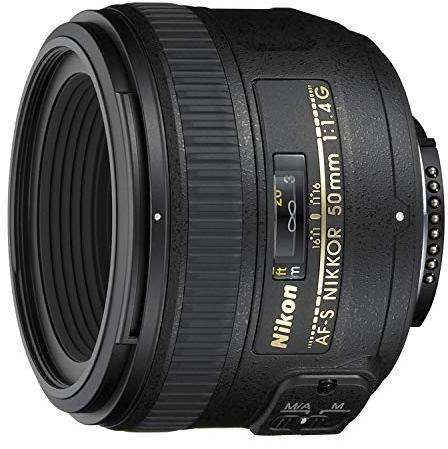
Nikon AF-S NIKKOR 50mm F1.4G
This D7500 lens is even better than the previous 50mm, with a fast f/1.4 aperture that provides more creamy bokeh and better low light performance.
Pros
Cons
Next, we have Nikon’s 50mm f/1.4G, the f/1.8 version’s bigger brother. Are you wondering what the differences are? Which one is better for Nikon D7500 DSLR? Let’s go find out!
First, let’s talk out the price. Unexpectedly, the 50mm f/1.4 doubles the price of 50mm f/1.8. So is it worth paying so much for the extra 0.4 stop of aperture?
From the sharpness perspective, I doubt it. The sharpness of f/1.8G wide open at f/1.8 is even a little sharper than f/1.4G at the same f-stop. Although it is less sharp above the f/5.6 range.
But when it comes to the bokeh, f/1.8 is undoubtedly the winner, especially for a crop-sensor camera.
Many photographers don’t realize the crop factor affects not only the field of view but also the background blur. As a result, the 50mm f/1.4 lens is equivalent to a full-frame 75mm f/2.1 lens, while the 50mm f/1.8 lens is equivalent to a full-frame 75mm f/2.7 lens.
Moreover, 50mm f/1.4 has two more diaphragm blades, making the shape of the bokeh circular. With that said, its downside is not only about the money. It is also 100g heavier than its little brother, 50mm f/1.8.
Altogether, 50mm f/1.4 should be on your “must have” list, especially if you want to achieve dreamy bokeh in your portrait photos.
Sigma 50mm f/1.4 EX DG HSM
Best Sigma Portrait Lens for Nikon D7500
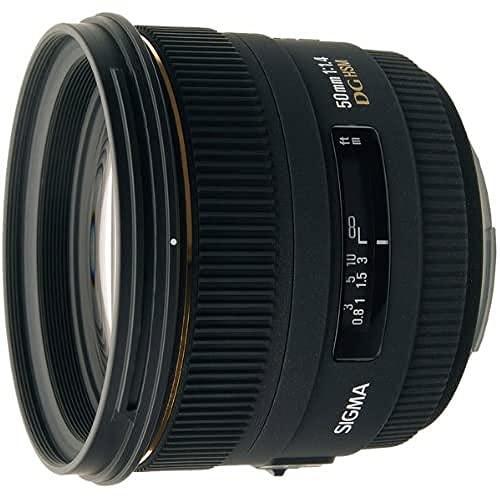
Sigma 50mm F1.4 EX DG HSM Nikon F (FX)
With the same sharpness as the previous 50mm f/1.4 lens, this D7500 lens is more affordable, also delivering beautiful crisp portraits.
Pros
Cons
Consider this one, my favorite of the collection, for its competitive price and outstanding performance.
As indicated by the acronym “EX” (Excellent), Sigma 50mm f/1.4 is top-notch. Its price is almost the same as Nikon 50mm f/1.8 at this point. But you get a wider aperture and a better bokeh effect.
The first thing that hit me, inevitably, is its incomparably huge front lens. It looks striking, but its downside is also obvious: It makes the lens heavier.
Another flaw is the lack of a mechanism for overriding the autofocus. However, most of the time, this feature is irrelevant. You can simply work around this by using different buttons (AF-ON or AF-L/AE-L) to activate focus and release the shutter.
Despite the two shortcomings, it is a fantastic lens. Its sharpness is almost the same as Nikon 50mm f/1.4 at its widest aperture, with progressively better performance on stopping down.
What exceeds my wildest expectation is its vignetting control. It has the least vignetting among others, and much of this is owing to its huge front lens. It is worth mentioning that the vignetting is even less caused on DX sensors.
In addition to this, the flare/ghosting levels are relatively low. The barrel distortion is well-controlled. The field of view is wider compared to Nikon’s 50mm primes.
What separates this lens from the herd is its faster autofocus. It is about twice faster as that of the Nikon 50mm f/1.4G. The autofocus is powered by Sigma’s HSM motor (Hyper Sonic Motor). As the name implies, it is also quiet.
The build quality is decent with a plastic exterior, but the lens itself is pleasant to touch with Sigma’s unique velvet coating. The lens also uses a diaphragm with 9 blades, making the bokeh more beautiful.
To sum up, I highly recommend it as the best portrait lens for Nikon D7500.
Lens Comparison Chart
Sigma 50mm f/1.4 | Nikon 50mm f/1.4 | Nikon 50mm f/1.8 | Nikon 35mm f/1.8 | Nikon 85mm f/1.8 | |
Focal range (mm) | 50 | 50 | 50 | 35 | 85 |
Maximum Aperture | f/1.4 | f/1.4 | f/1.8 | f/1.8 | f/1.8 |
Minimum Aperture | f/16 | f/16 | f/16 | f/22 | f/16 |
Weight (gr) | 505 | 280 | 185 | 200 | 350 |
Length (mm) | 68.2 | 54.2 | 52.5 | 52.5 | 73 |
Diaphragm blades | 9 | 9 | 7 | 7 | 7 |
Aspherical Elements | 1 | 1 | 1 | ||
Filter diameter (mm) | 77 | 58 | 58 | 52 | 67 |
Full-Time manual focus | No | Yes | Yes | Yes | Yes |

